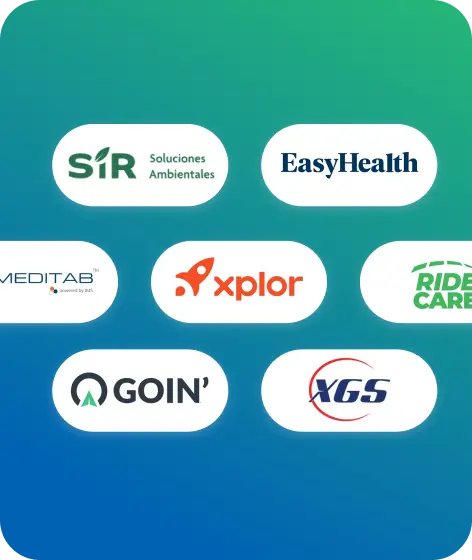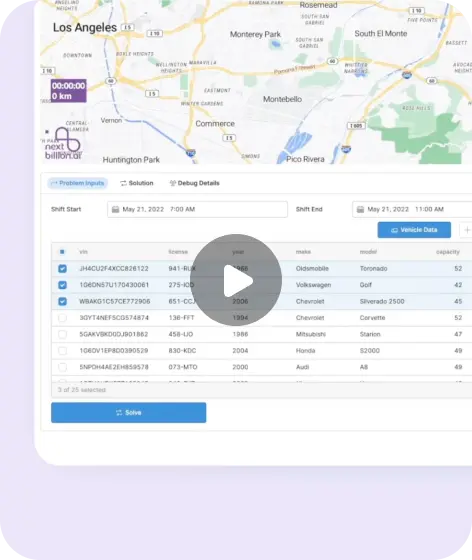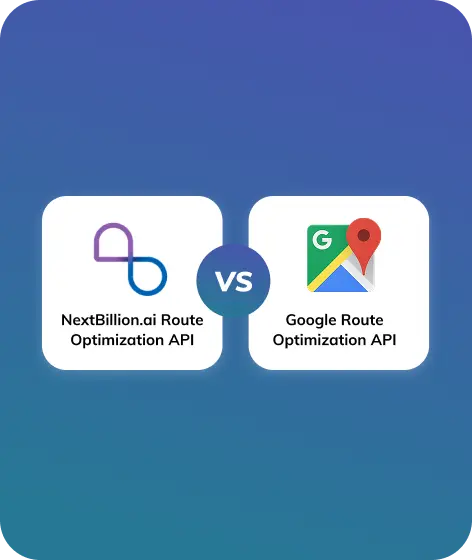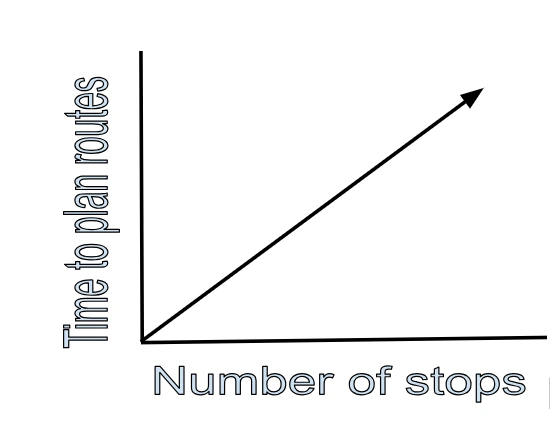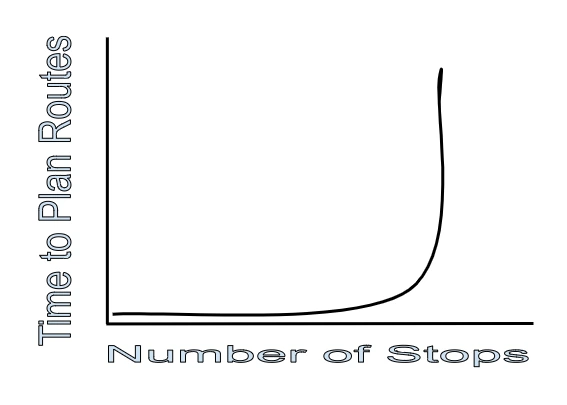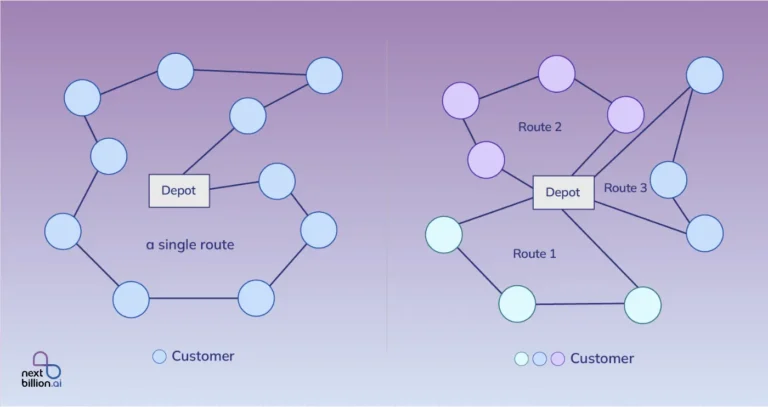
Table of Contents
One of the biggest issues facing organizations as they grow is how to efficiently manage their fleet of automobiles. Businesses have struggled with vehicle routing for many years, and numerous solutions have been put forth. However, vehicle routing issues continue to impact organizations worldwide in spite of the numerous solutions available. We will examine the numerous kinds of vehicle routing difficulties, their significance, and the range of solutions that are possible in this post.
Finding the most effective routes for a fleet of vehicles to deliver goods or services to numerous consumers at different places is known as the Vehicle Routing Problem (VRP), which is an optimization problem. In addition to meeting specific requirements, including each vehicle’s capacity and the delivery window for each destination, the objective is to reduce the overall distance covered by the trucks.
A wide range of industries, including delivery logistics, transportation planning, and emergency response, can benefit from the VRP’s ability to lower costs, boost productivity, and enhance customer service through quicker deliveries.
It can be difficult to solve the VRP since it takes into consideration a lot of variables, such as vehicle capacity, travel times and distances between locations, and driver and vehicle availability. The VRP can be solved using a variety of algorithms and heuristics, such as Integer Linear Programming (ILP) and heuristics like the sweep, insertion, and nearest neighbor methods.
What is the Vehicle Routing Problem (VRP)?
One of the fundamental problems in the logistics and transportation industry is the truck routing challenge. It results in inefficiencies such as extended wait times, erroneous delivery routes, higher travel expenses, time and resource waste, and disgruntled customers.
Finding the most effective method to execute delivery operations and transport items utilizing a fleet of vehicles via many routes is known as the vehicle routing problem.
Finding the optimal selection of routes for the vehicles to reach each stop while reducing the overall distance driven, the number of vehicles employed, the delivery time, and the fuel expenses is the aim of this challenge. Other elements such as each vehicle’s capacity, the time window, and the amount of servicing time needed between stops will also be taken into account.
Why Is It Necessary to Fix Vehicle Routing Issues?
Every problem requires a proper solution. These problems can be challenging depending on the intensity. The vehicle routing problem is a complex challenge for the logistics industry. If you work in logistics or last-mile delivery, you may have encountered a number of issues, chief among them being vehicle routing issues.
Vehicle routing issues affect all companies that use the delivery route planning and optimization procedure. Using commercial solvers or route optimization tools to solve VRP will save travel expenditures, boost fleet utilization, and cut logistics costs.
Taking into account a number of variables, such as time, distance, fuel cost, profitability, vehicle capacity, time windows, and traffic conditions, this involves figuring out the most economical, efficient, and time-saving method of delivering goods or services to multiple clients.
Businesses may significantly reduce wasteful fuel consumption and idle time by utilizing solutions that optimize according to business needs. Resolving VRPs also guarantees that client requests are fulfilled quickly, increasing client satisfaction. There are multiple benefits of resolving VRP such as:
1. Reduce logistics expenses
Route planning systems seek to reduce logistics expenses by streamlining delivery routes and reducing the number of trucks used for deliveries. Needless to say, this has a big impact on regular logistics expenses. Additionally, reducing needless operating costs like gasoline could enable a corporation to turn a profit on its own. Among the top five costs for shipping, logistics, and distribution are labor and fuel. A company can lower both by using a route optimization solution. These can be expensive as well as surprising.
2. Achievable sustainable growth
More carbon footprints result from complex transportation operations and strategies. However, companies can accomplish sustainability objectives with an efficient VRP system. They may lessen their impact on the environment and help create a more environmentally friendly future with an optimized solution. All of this is made feasible by reducing the number of cars on the road and streamlining delivery routes.
3. Save time and increase customer satisfaction
It goes without saying that using VRP solutions to optimize delivery routes and shorten delivery times can save a significant amount of time compared to manually arranging routes. This results in the best levels of customer happiness and retention as well as business efficiency.
Businesses nowadays aim to be flexible and sensitive to shifts in the market. They do, however, encounter several difficulties and unforeseen setbacks, particularly when it comes to last-mile delivery. Solutions for vehicle routing might help you save time and provide your company more assurance.
Why is it so difficult to solve the Vehicle Routing Problem?
A class of optimization problems known as the VRP combines several Traveling Salesman Problems. When you multiply the number of drivers and add in real-world constraints like time-windows, vehicle capacities, actual traffic conditions that affect travel times, stochastic service time at locations, etc., you can see how difficult the combinatorial optimization problem can become. The TSP is already known to be NP-hard.
However, that’s only one aspect of why VRPs are a continuous problem-solving exercise. We must first comprehend time complexity in order to comprehend why vehicle routing problems are difficult to solve, as well as why NP-hard problems are generally so difficult to solve.
The way that calculation time increases with problem size is referred to as time complexity. Here are a few examples to help clarify:
For example, if you wish to determine the overall distance of a particular route with four stops. To put it another way, you’re simply adding up the distance rather than attempting to find the shortest route. It’s as easy as adding up the distances between Stops 1 and 2, Stops 2 and 3, and Stops 3 and 4. After that, you’re finished.
All you have to do is figure out the overall distance if your route plan now includes four additional stops. Stated otherwise, the quantity of computations required increases in direct proportion to the size of the problem input.
This is what we call a linear problem. As things scale and get bigger, the time it takes to solve the problem scales accordingly, in a linear fashion.
Let’s now examine a route optimization situation that involves ten stops that require planning, along with some typical limitations like vehicle capacity and delivery time windows.
You would need to figure out every potential combination of those ten stops (while meeting limits) and then examine each one to determine the optimal one in order to determine the quickest route for your fleet of cars. It’s overwhelming how many combinations there are.
We refer to this as an exponential problem. The time required to discover the best answer grows exponentially with scale and size. The complexity of the situation increases until it is nearly impossible for a human to compute without assistance.
Route planning is easy, which is why people have been doing it by hand for so long. Planning optimum routes is a challenging task that becomes nearly impossible for a human to complete without assistance when you include constraints that are significant to your company.
What are the Different Ways to Solve Vehicle Routing Problem?
As we are discussing the possibility of getting a proper solution for the vehicle routing problem, knowing what exactly is vehicle routing problem and its types was the first step. Now it is the time to look at its solution. Vehicle Routing problems have several solutions. They are:
1. Manually Solve VRP
Listing every address, figuring out how many cars are available, establishing limits, and route planning are all part of the manual VRP solution process. However, companies will need to show every route alternative by rearranging the addresses in order to determine the optimal one. Basically, in order to find that one ideal path, a lot of permutations must be made.
However, because the delivery addresses are not the same every day, this method is comparatively less flexible and takes a lot of time and mental effort. A further drawback of the manual procedure is its lack of scalability and increased potential for human error.
2. Using Google OR-tools
Google’s OR tools are strong optimization tools that need code written in Python, C++, Java, or C# to solve the VRP. Companies can resolve the issue by supplying the necessary information, such as the start and end locations, the number of cars, the capacity limitations, and the time windows.
The Google-OR tool’s drawback is that it necessitates a high level of coding proficiency, but companies may always hire developers. To solve the VRP using Google OR-tool, follow these steps:
Step 1: Define the problem: Identify the issue Describe the task by outlining all of the key elements and limitations.
Step 2: Formulate the problem: Identify the issue Create a mathematical model of the problem using the OR-tool routing library. The choice variables, constraints, and objective function will all be taken into account by the model.
Step 3- Define the search strategy: To find an optimal solution, the tool provides various strategies such as local search, guided local search and simulated annealing.
3. Using Route Optimisation Software
Utilizing effective route optimization software is the last strategy for resolving VRP. The route optimization feature of TrackoMile is an effective tool for managing and planning routes. All businesses need to do is make a list of all the stops and enter all the required information, and the ideal route will appear before their very eyes.
The solution of VRP problems is further improved by the other useful functions that route optimization software offers, such as real-time tracking, dispatch management, carrier management automation, and proof of delivery.
Route Optimization API for VRP
The key to solving the VRP and its numerous variations for any given use case is a route optimization API. Not just any route optimization API, but a fully featured one that comes with the ability to account for factors like vehicle capacity and driver shift timings in its calculations. Not all of them do.
Why not use a full-fledged packaged routing solution instead of just a route optimization API? Wouldn’t it be easier? Not necessarily. Packaged solutions have some serious limitations. They exist in the proprietary ecosystem of the solution provider and are often incompatible with other external tools. Because of this, these kinds of solutions make most sense when there is no existing infrastructure in place. If the need is to integrate into a pre-existing system architecture, an individual route optimization API is the best bet — it won’t require any costly or time-consuming infrastructure overhaul.
There’s another reason to opt for a route optimization API over a full route optimization solution. Even if there is no pre-existing infrastructure, a packaged solution will limit future options. The lack of modularity and flexibility can prove to be a point of failure when looking to scale up operations or cut costs. A high-performing standalone route optimization API imposes no such restrictions.
About Author
Divya Nair
Divya is a dedicated Technical Content Writer with experience of two years in the industry. Her expertise spans various forms of writing, including blogs and website content.

